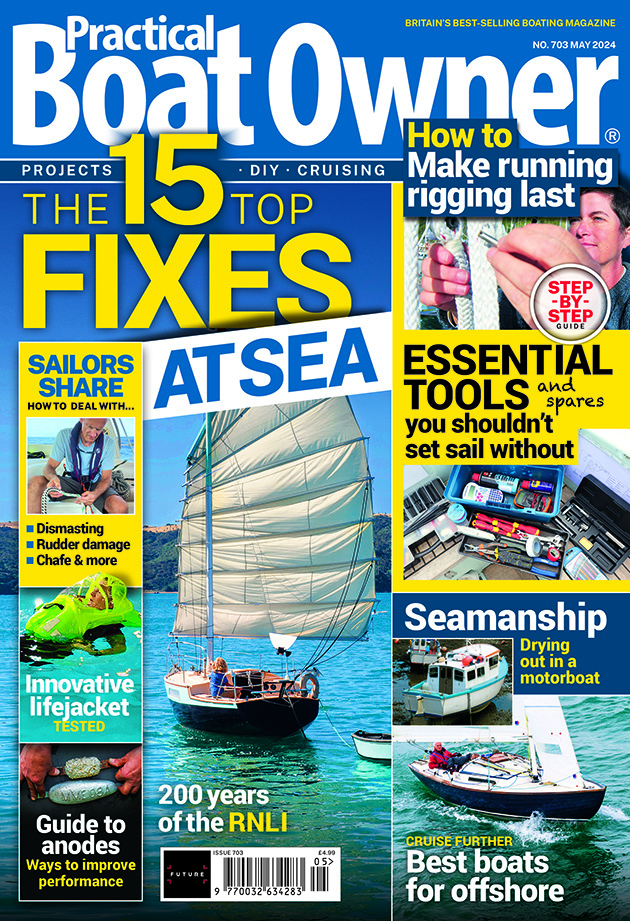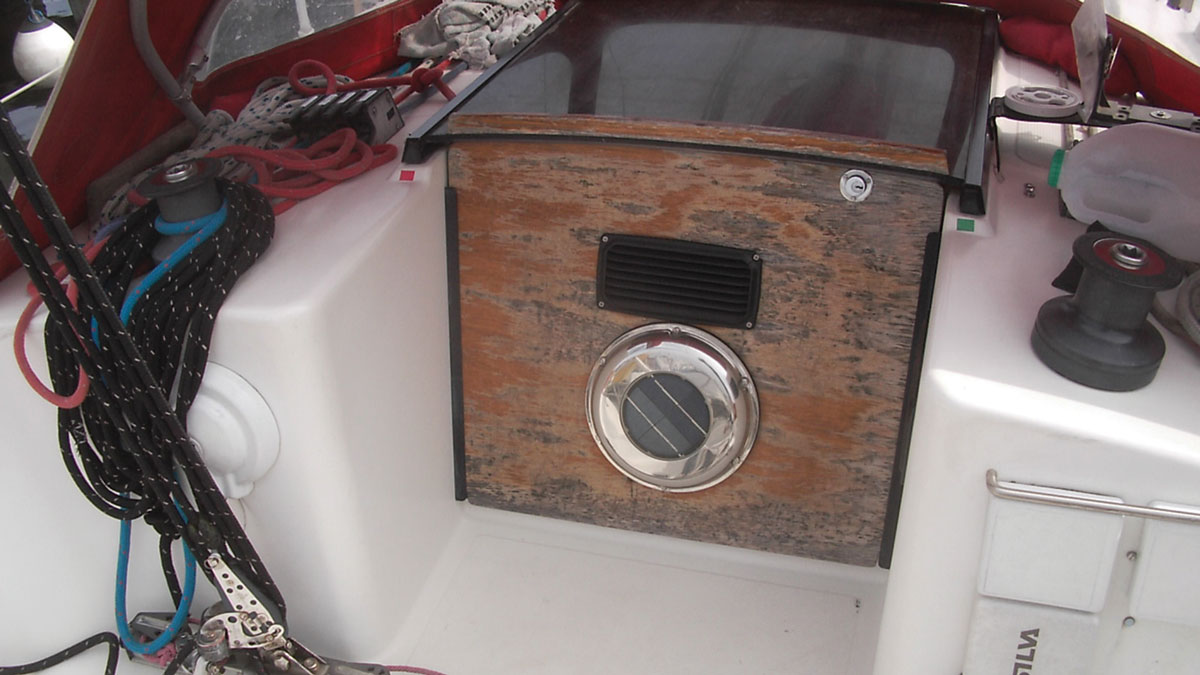Brian Johnson replaces his old paddlewheel log with an electromagnetic transducer
Brian Johnson shares how he went about installing a transducer on a boat
I’m not a big fan of paddle wheel log transducers – they seem to attract marine life and mud, and are especially vulnerable to damage from marauding slings at boatyards when owners like me forget to remove them at lift-out, writes Brian Johnson.
To add to the fun, freeing them up when stuck usually results in a water fountain into the boat, needing lots of bailing and sponging in awkward bilge areas.
So I was pleased to discover that NASA Marine has produced an electromagnetic log transducer (EML3) that has no moving parts and, most importantly, includes a ‘black box’ that turns the transducer output into pulses that mimic those from paddlewheels.
My boat has a full array of Navico displays fitted in 2005, which still work well, but the transducers have either died or, like the paddlewheel, were missing when I bought the boat and are no longer available.
Removing the display heads and electronics that feed them would involve some awkward rewiring and fibreglass surgery, so I thought I might be able to fit an EML3 transducer and get it to talk to the Navico display.
Wallet lighter, the box arrived together with some installation instructions that included a short paragraph about getting it to talk to Raymarine displays, but not Navico.

Installing a transducer on a boat: Success! The Navico display springs into life, showing accurate and sensitive speed through the water using data from the NASA EML3 transducer via the black box. Credit: Brian Johnson
However, the optimist in me was fairly confident that I could marry it up to the Navico junction box and display unit.
My first job was to remove the old Navico through-hull skin fitting and fit the NASA replacement, which fortunately had the same 50mm outside diameter.
I decided to remove the old skin fitting this winter when the boat was on the hard – easier said than done as some kind soul had stuck it into the thick Westerly hull using the best adhesive ever devised.
The solution was to use a narrow Japanese pull saw, carefully cutting four slits through the plastic fitting and collapsing it inwards. NASA Marine advises using a marine silicone sealant to fit their unit because silicone sealants do not react with and weaken plastic fittings.
It also makes it easier to remove the skin fitting in future.
The fitting went in easily and the top nut was tightened only a little beyond hand-tight, as per the instructions.
Continues below…
Banish winter damp: install a solar-powered vent
Ten years ago, Colin Haines installed a solar-powered vent on his boat. He shares the results and if it still…
Easy berthing with a boat pick-up line
Bill Rothwell devises a simple boat pick-up line to make berthing easier
No mess oil filter change for a boat engine
Simon Westmacott devises a way to keep his bilges clean when changing the engine's oil filter
Making a headboard for comfier sleeping on board
Chris Mardon fabricates a removable wooden bunk headboard
This done, and the transducer snugly in place, I then had to thread the transducer cable through the bulkheads to meet the Navico junction box for the display unit.
NASA has made this much easier by not fitting a moulded plug to the cable, meaning I could temporarily tape the new cable to the old and gently pull it through the existing conduits to the junction box.
I fitted the NASA black box next to the Navico electronics box and connected the new transducer cable and a fused power supply to the black box.
The black box has two outputs, one of low output that talks to NASA displays and another of high output designed to talk to ‘legacy’ displays like my Navico.
First I tried the low output connected to the Navico box, but that didn’t work, so I then swapped to the high output and bingo!
The Navico display showed 0.1 to 0.2 knots on the mooring, which is about right for the wind-driven current.
The black box has a flashing LED that reassuringly shows that it’s working correctly.
Subsequent trials at sea have shown the transducer to be highly accurate when calibrated using the small knob on the black box.
No more fouled paddlewheels! The EML transducer skin fitting comes with a useful blanking plug that can be used when antifouling the boat.
I’m pretty sure the transducer and black box would talk to any make of display that uses input from a paddlewheel.
Enjoy reading Installing a transducer on a boat?

A subscription to Practical Boat Owner magazine costs around 40% less than the cover price.
Print and digital editions are available through Magazines Direct – where you can also find the latest deals.
PBO is packed with information to help you get the most from boat ownership – whether sail or power.
-
-
-
- Take your DIY skills to the next level with trusted advice on boat maintenance and repairs
- Impartial in-depth gear reviews
- Practical cruising tips for making the most of your time afloat
-
-
Follow us on Facebook, Instagram, TikTok and Twitter








